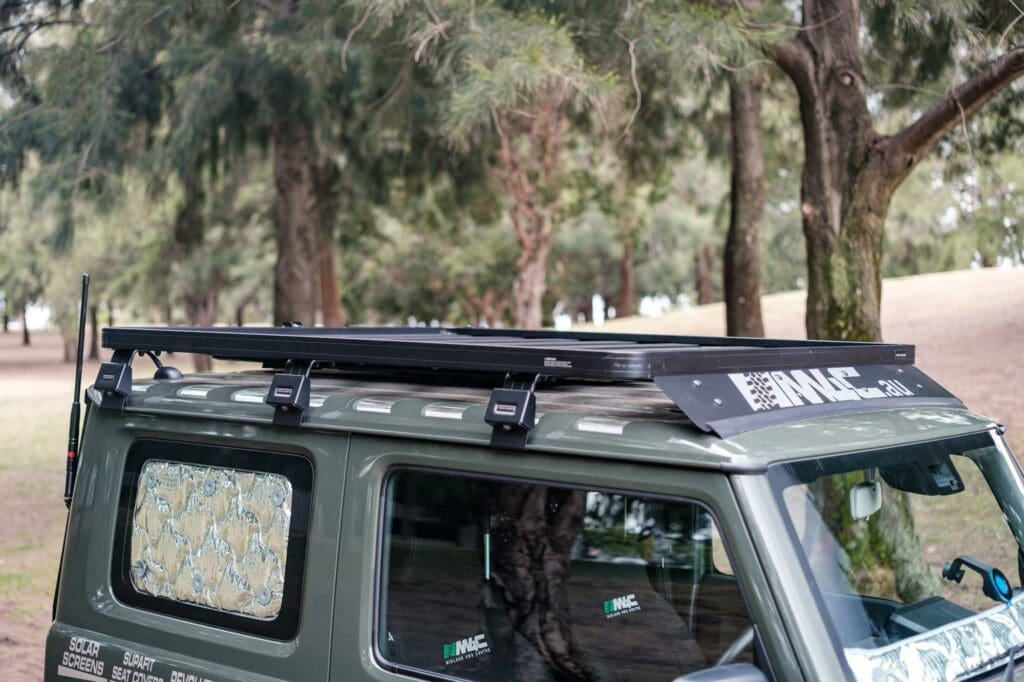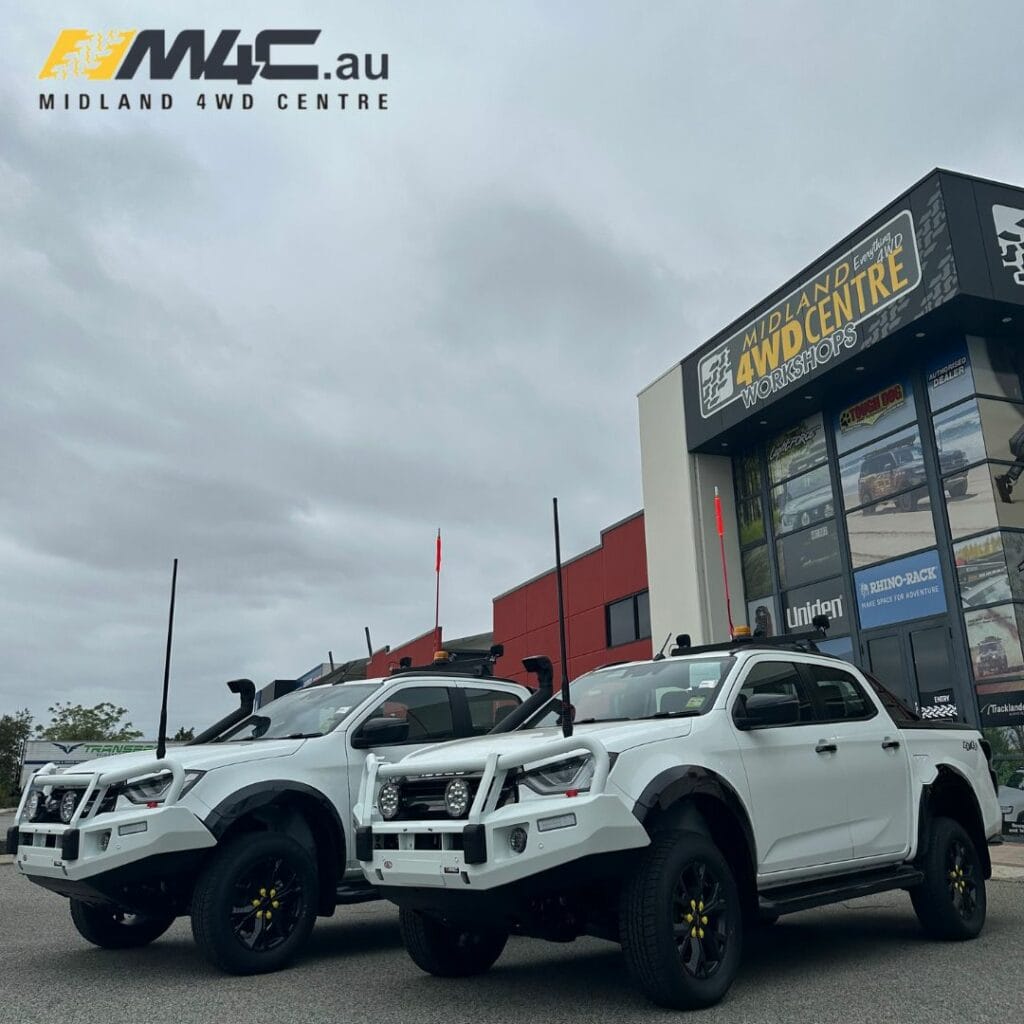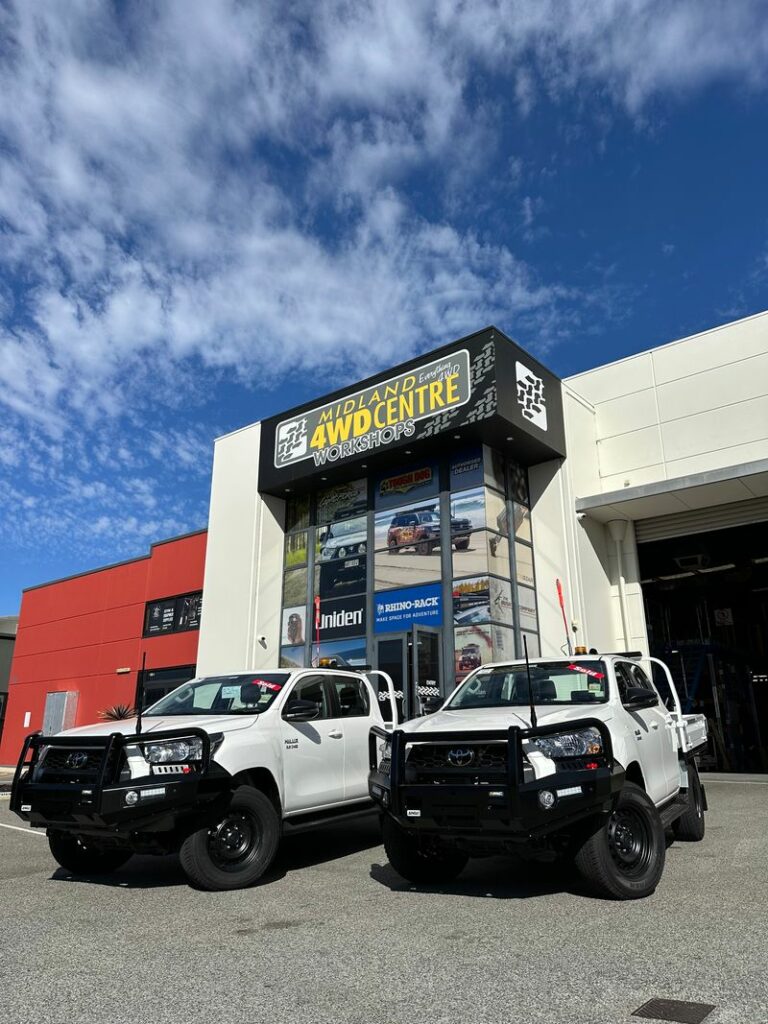
When considering roof racks for your 4WD, it’s important to understand the differences between the various options on the market. The primary difference is you are looking at either your more traditional load bars or the more modern variation platform racks. Both have their pros and cons, depending on your specific needs and the design of your vehicle.
Load Bars vs Full Platform Racks
Load bars, often seen as crossbars, are a more minimalistic option. They are ideal for carrying fixed items such as, rooftop tents, especially for brands such as The Bush Company, and longer items like kyacks, ladders or surfboards. They are lightweight, strong and offer the simple solution of giving you more storage space outside your vehicle. These days most cross bars can be mounted on adjustable feet or rails to give you a little bit of flexibility in what you put on the roof however they lose out to the platform racks from versatility of mounting options. Load bars, while lighter, are also often thicker then a platform rack and sit up higher as they need to compensate for less material to bear load through. Some of the load bars can be up over 50mm thick with Front Runner offering the slimest on the market at only 19mm.
Ultimately they are a great option for the occasional user. They are comparatively cheap, substantially lighter than a platform and you can still attach plenty of accessories to improve useability.
Full platform racks, on the other hand, offer a larger surface area and are typically used by more regular travellers. These racks run the full length and width of the vehicle’s roof and are close to the roof itself, which can make installation of certain accessories more challenging. While they can be used to mount rooftop tents, it’s often overkill as the tents already have a sturdy base. Platform racks are more suitable if you need to mount additional accessories or carry more gear. They are great for odd sized loads as well because they offer an increased variety of tie down options.
Whether you look at brands like Tracklander, FrontRunner or Rhino Rack they all offer a similar sized platform, it is the construction style that changes and varies and each offers different pros and cons. It is worth checking out a number of different brands when you are making considerations and look at everything from the mounting system through to the the thickness of the material and whether things are bolted together or welded as these all make a massive difference.
Vehicle Roof Load Limits
No article about roof racks would be complete without a dip into the world of roof load limits.
There are three key terms to understand
-
- Dynamic Load Rating: This is how much the rack or roof is rated to while moving
-
- Static Load Rating: This is how much the roof or roof rack is rated to while stationary
-
- Offroad Load Rating: This is how much the roof or roof rack is rated to while travelling off a sealed road.
The part that is often proving difficult at the moment is that roof rack manufacturers want to push the roof load rating back onto the vehicle manufacturers and the vehicle manufacturers want to put it onto the roof rack manufacturers. So in some cases, we are ending up in a position where only the roof rack manufacturer is stating a weight limit so this often ends up being the number that is used. For many manufacturers they rate their racks around 150Kg however that needs to include the weight of the rack.
Other Considerations
-
- Mounting Position: The mounting position of the racks can impact vehicle handling and fuel efficiency. Aerodynamics, axle load, and the distribution of weight are important factors to consider.
-
- Type and Size: Choose the type and size of the rack based on your specific needs, whether it’s carrying light items like fishing rods or heavier gear.
-
- Material: Most racks are made of steel or aluminium. Both options have their pros and cons
-
- Durability: Look for racks that are made to last up to travel around Aus. There are a number of companies that are still Australian-made and a few that are Australian-owned.
Brands like Rhino Rack, Frontrunner, and Tracklander offer a range of options catering to different needs and vehicle models. It’s worth exploring their products to find a solution that fits your 4WD and your specific requirements.
In conclusion, the choice between load bars and full platform racks depends largely on what you intend to carry, the design of your vehicle, and the specific activities you have planned. Always consider the vehicle’s roof load limits and the rack ratings to ensure safety and compliance with legal standards. With the right setup, roof racks can greatly enhance your 4WD’s useability and versatility for outdoor adventures.

